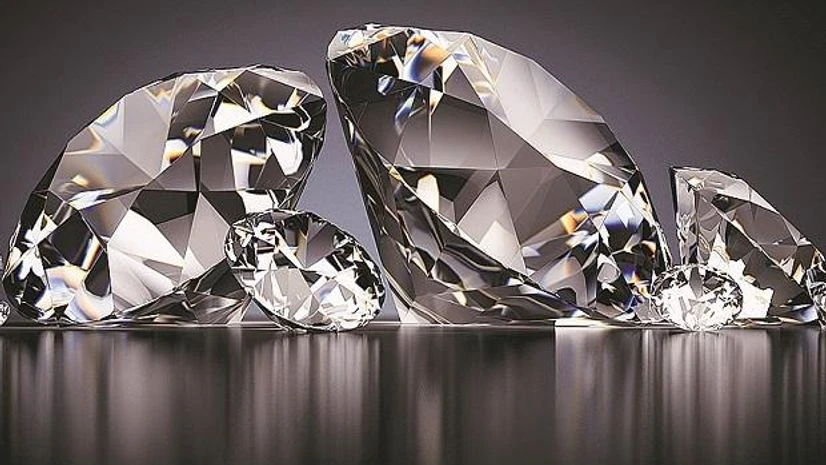Table of Contents
Introduction to Lab Diamond Rings
With regards to buying a ring, whether it’s for an engagement, an anniversary, or because, lab diamond rings are ending up being increasingly popular. Regardless, what makes these sparkly stones so special? And how do claws play a task in their settings? We ought to bounce into this dazzling world.
What Are Lab Diamonds?
Lab diamonds are real diamonds, yet they’re created in a controlled environment rather than mined from the earth. They have the same physical and chemical properties as natural diamonds. Subsequently lab diamond rings claws, assuming you’re wondering whether lab diamonds are “real,” have confidence they are!
Why Pick Lab Diamonds?
Picking lab diamonds can be a smart decision for several reasons. They’re a large part of the time more affordable than natural diamonds and accompany a smaller environmental impression. Furthermore, you can get a greater, more dazzling stone for the same expense.
Understanding Ring Settings
Before we talk about claws, we ought to get to know ring settings. The setting is the part of the ring that holds the diamond in place. It’s crucial because it affects not only the ring’s appearance yet additionally its durability.
What Are Ring Settings?
Ring settings look like the frame of a painting. They hold the diamond safely and enhance its beauty. There are various types of settings, each surrendering an alternate shift concentration to the ring.
Popular Settings for Lab Diamonds
Lab diamonds can be set in various styles, including classic prong settings, elegant bezel settings, and present day tension settings. Each style has its own charm and advantages.
Claws in Ring Settings
By and by, we ought to get to the down and out: claws. Claws, also known as prongs, are metal tips that hold the diamond in place. They’re essential in showcasing the diamond’s brilliance while securing it immovably.
Lab grown diamonds have revolutionized the jewelry world by offering a sustainable and ethical alternative to mined diamonds. These diamonds are created in controlled laboratory environments using advanced technological processes that mimic the natural diamond formation, but in a fraction of the time.
What Are Claws?
Claws are small metal projections that wrap around the diamond to hold it safely. They’re typically tracked down in prong settings and can vary in number and plan.
Types of Claws
Various types of claws offer varying looks and levels of safety for your diamond.
Prong Claws
Prong claws are the most common sort. They come in various plans, similar to single or multi-prong settings. They’re ideally appropriate for showcasing the diamond’s sparkle while keeping it secure.
V-Prong Claws
V-prong claws have an unmistakable Angular shape that not only gets the diamond yet additionally adds a touch of elegance to the ring. They’re great for a more contemporary look.
Bezel Claws
Bezel claws wrap around the diamond, offering maximum protection. They’re a fantastic decision for individuals who favor a smooth and present day appearance.
Picking the Right Claws for Your Lab Diamond Ring
While picking claws for your lab diamond ring, consider the two feel and functionality.
Smart Considerations
The plan of the claws should enhance the diamond and the overall style of the ring. Whether you slant toward a classic prong or a cutting edge bezel, the claws should enhance the ring’s appearance.
Durability and Practicality
Different claw types offer various levels of safety. Bezel claws, for example, give more protection than prong claws, making them ideal for everyday wear.
Advantages and disadvantages of Claw Settings
Understanding the advantages and disadvantages of claw settings can assist you with making an informed decision.
Advantages of Claw Settings
Claw settings allow more light to enter the diamond, enhancing its brilliance. They’re also versatile and can be adapted to various diamond shapes and sizes.
Disadvantages of Claw Settings
On the drawback, claws can be prone to catching on apparel and various articles. They could require more continuous maintenance to guarantee the diamond remains safely in place.
How to Care for Claw-Set Lab Diamond Rings
Appropriate care can keep your claw-set lab diamond ring putting the best version of its forward for years to come.
Regular Cleaning
Regular cleaning stays aware of the diamond’s sparkle and eliminates any dirt or oils that could dull its appearance. Use a delicate cleanser and a delicate brush for the best results.
Avoiding Common Damage
To forestall damage, avoid introducing your ring to harsh chemicals or abrasive materials. Also, know about where you wear your ring to hold it back from catching or scratching.
Conclusion
Lab diamond rings with claw settings offer a staggering blend of beauty and practicality. Whether you’re drawn to the classic prong, the elegant V-prong, or the cutting edge bezel, each claw type has its intriguing charm. With the right care, your claw-set lab diamond ring can sparkle magnificently for years to come, making each second sparkle somewhat more. Subsequently, whether you’re searching for a special occasion or basically want to treat yourself, make sure to consider the claws — they’re not functional yet in addition a critical part of the ring’s style.
)

